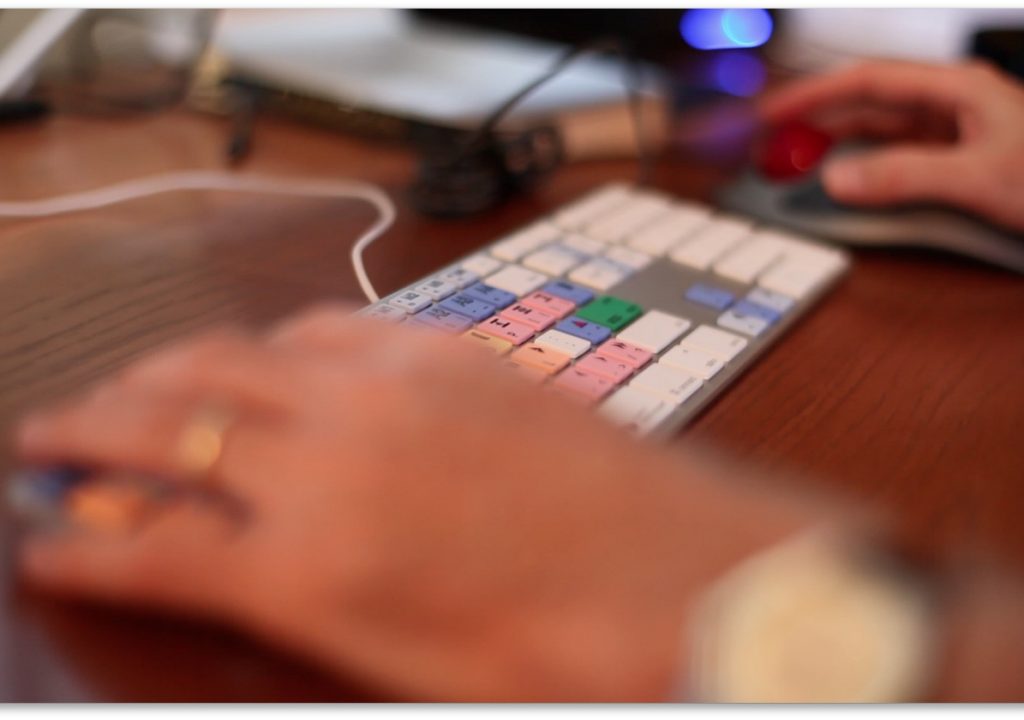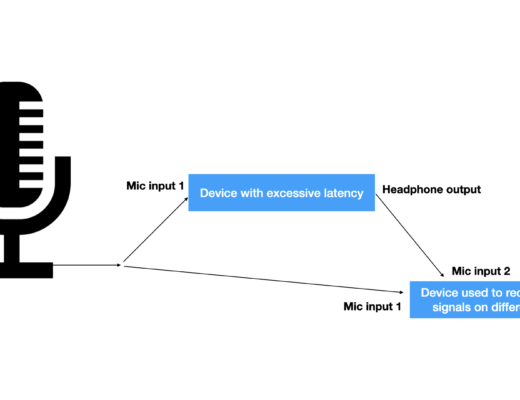This is the third and final article in the post production process for the theatrical feature film War Room which I co-edited with director, Alex Kendrick. This article will walk through the steps from picture lock through the audio editing, sound design and final mix.
This is the third and final article in the post production process for the theatrical feature film War Room which I co-edited with director, Alex Kendrick. The first article described the dailies process through the creative edit and picture lock. The second article described the preparation to hand off the locked picture to the DI house, Roush Media and their subsequent work conforming it back to the original RED files, color grading and delivery of the DCP to the studio for duplication and delivery to the theaters. This article will walk through the steps from picture lock through the audio editing, sound design and final mix.
 Alex (pictured left) and I had been quite careful about choosing what we thought were the best takes – and partial takes – to create a good sounding dialogue track. Alex, in particular, treated the dialogue audio almost as though it was a final edit and mix. Dialogue tracks were carefully edited and layered with performances often created from multiple audio takes lip-synced under a single video take. We also had room tone tracks looped for every scene and temp music tracks that were pulled from many different sources.
Alex (pictured left) and I had been quite careful about choosing what we thought were the best takes – and partial takes – to create a good sounding dialogue track. Alex, in particular, treated the dialogue audio almost as though it was a final edit and mix. Dialogue tracks were carefully edited and layered with performances often created from multiple audio takes lip-synced under a single video take. We also had room tone tracks looped for every scene and temp music tracks that were pulled from many different sources.
 When we were close to locked, I spent a few days organizing and labeling the tracks so that we delivered a very organized sequence with dialogue limited to the top four tracks, wild tracks and sound effects on the next two tracks, room tone on the next two tracks and stereo music (really dual mono) on the next four tracks allowing us to checkerboard the music and overlap it, much like the dialogue tracks. Making the music dual mono was my mistake actually. I would definitely import and edit music as stereo tracks instead of dual mono if I had it to do over again. Avid allows you to convert these channels after import if you imported them incorrectly, but I had started editing dual mono and we just kept going that way throughout the process. Obviously, true stereo tracks have a number of benefits, including less editing work and a cleaner timeline.
When we were close to locked, I spent a few days organizing and labeling the tracks so that we delivered a very organized sequence with dialogue limited to the top four tracks, wild tracks and sound effects on the next two tracks, room tone on the next two tracks and stereo music (really dual mono) on the next four tracks allowing us to checkerboard the music and overlap it, much like the dialogue tracks. Making the music dual mono was my mistake actually. I would definitely import and edit music as stereo tracks instead of dual mono if I had it to do over again. Avid allows you to convert these channels after import if you imported them incorrectly, but I had started editing dual mono and we just kept going that way throughout the process. Obviously, true stereo tracks have a number of benefits, including less editing work and a cleaner timeline.
With the audio tracks well organized and the picture locked, I created an AAF file at the direction of audio editor and sound designer, Nick Palladino. The file I created consolidated the audio with handles and exported the entire movie as a single file that included all of the audio in the timeline as well as the “EDL” information that would allow that audio to open up in ProTools as a timeline that looked basically like the one we had in Avid. The “consolidation” process takes just the pieces of a longer take and just the selected track from a multi-track recording and re-saves that section that is used in the sequence as a new, shorter file. This keeps the size of the AAF down to something that is manageable. We also delivered all of the raw audio files that were delivered by on-set sound mixer, Stephen Preston from Red Sky Studios, and other audio files that we created or purchased during the editing process. The audio materials from on-set included every take and every track exactly as recorded.

Avid Timeline for War Room, organized and prepped for delivery to audio and DI.
Many of these “post” audio files were recorded on my trusty ZOOM H4N as we found we needed them, including my own vocal performance as the voice on the other end of a conference call. Other things recorded on the H4N included doorbells, door knocks, cars pulling into driveways, phone rings and phone message alerts. I also used the H4N to record two ADR lines to replace the voice of one of the actors. Everything but the two vocal recordings were replaced by Nick Palladino and his team.
With my deliverables to the sound team ready, Nick Palladino took over once he received the hard drive with the audio files. Nick worked on a Pro Tools HD system with a Blackmagic card to feed video to the projector.
“We start with the AAF of the locked picture.” Nick explains, “I’ve done the last four films with the Kendrick Brothers and over the last ten years the digital technology has really changed. We start out by going though all of the dialogue tracks and we pick between the wireless lavs, the booms and any ADR and we make a smooth dialogue track, where it’s all been de-noised. Then we come back and put all of the sound effects in and all the backgrounds, all the footsteps. The music was then delivered to us by composer Paul Mills. We start with the temp music, which is what (the editors) used during editing, and we replace those tracks with the final score.”
 “We were on a crazy deadline with the music and received 5.1 mixes from Paul which we plugged into our mix while we were on the recording stage, explained Nick. “He did a spectacular job mixing so we only went back to the stems that he delivered for a couple of places. We did have full Stems of everything. There were at least 10 stems per music track. High strings, low strings, bass, percussion, etc.”
“We were on a crazy deadline with the music and received 5.1 mixes from Paul which we plugged into our mix while we were on the recording stage, explained Nick. “He did a spectacular job mixing so we only went back to the stems that he delivered for a couple of places. We did have full Stems of everything. There were at least 10 stems per music track. High strings, low strings, bass, percussion, etc.”
According to Nick: “We almost never have to do ADR with stuff on a Kendrick’s brother movie. It’s minimal, a few words. Alex goes through and finds the best performance and he can usually tell if the dialog is good enough to use.”
I asked Nick about the times when he chose different takes or tracks than the ones we chose in the picture edit. Nick explained, “When you’re editing picture, you’ve got computers and a fairly noisy listening environment you don’t hear a lot of things just because of the listening level you usually are editing at, but when dialogue gets up to broadcast levels it’s amazing what’s there… the noise. And it is very, very distracting.”
Nick compliments director Alex Kendrick on his intelligent understanding of the role and ability of sound to help the story: “Alex has specific ideas about sound effects and stuff, and puts a good temp in there which gives us a good direction and often times we’ll build off of his effect.”

This is the Avid sequence for the same section of the movie that is pictured in the screengrab below in ProTools.
But obviously, the sounds and dialogue work that Alex and I carefully crafted was amplified (no pun intended) by Nick and his team. “At that point though we do have to go through every scene, every mic and decide that this is the best combination that isn’t going to hear any sound change or room tone change to make the best possible track from this,” Nick explains. “Then we noise-reduce that, clean that up and put it in. Our dialog track on this was one of our best pieces of work ever. It was a pristine dialog track. It was recorded well. (Thanks to sound mixer Stephen Preston and his team.) You’ve got to have the recording in the field. If you don’t have the recording in the field, we can twist knobs all day long and it’s going to help some but it’s never going to get it pristine. War Room is an A movie: Shot that way, edited that way, and it sounds that way because of the dialog – that professional edge to it.”
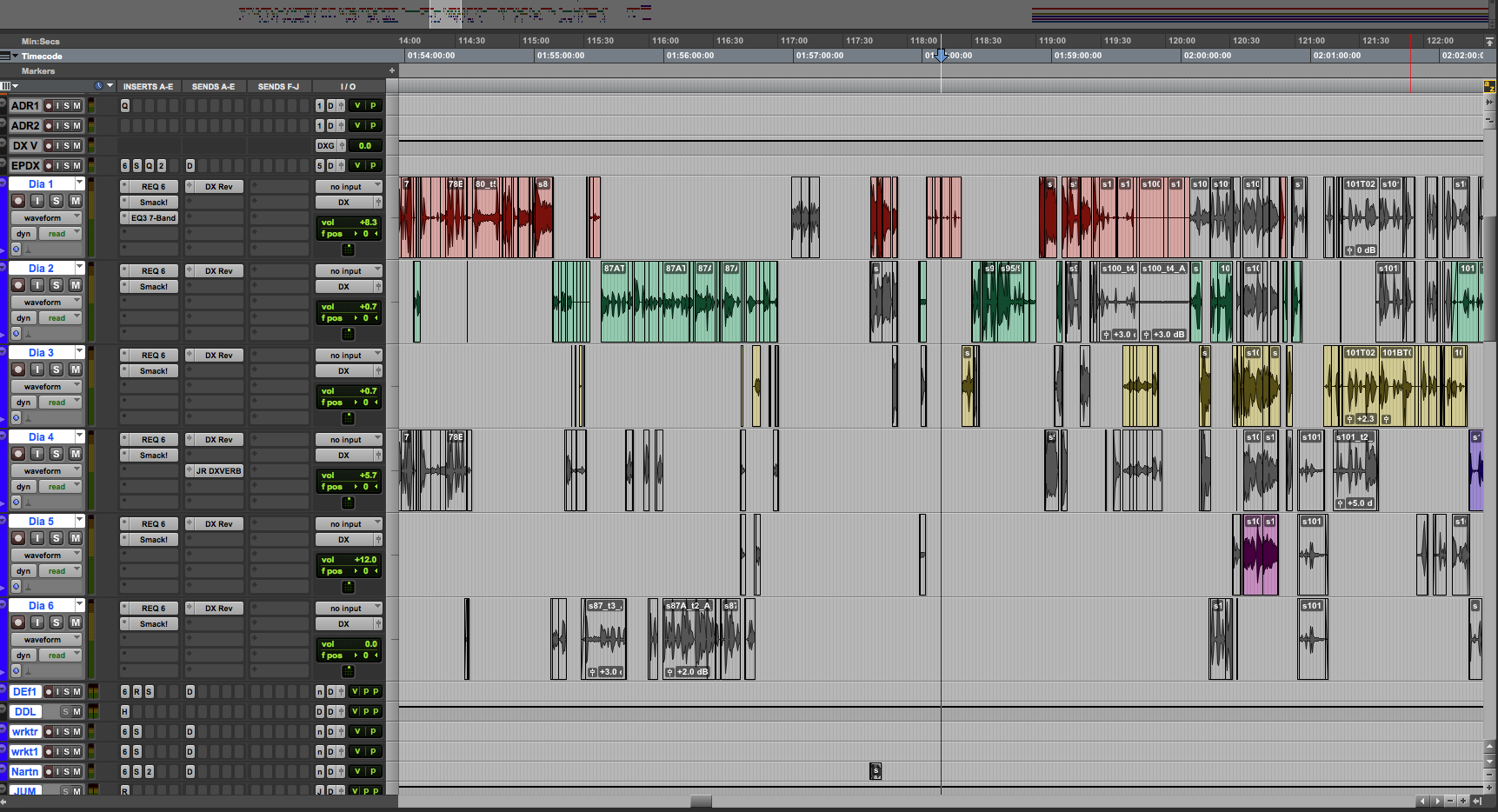
This is a screen grab of a ProTools timeline indicating about four minutes of dialogue tracks from the middle of the movie, War Room. The identical section of the movie from the Avid timeline is just above it.
Alex and I had placed a lot of sound effects into the movie, but we knew that all of that work would be re-done by the Nick and his team, but we were careful to edit and mix it as well as we could so that preview audiences and the studio could watch a version of the movie that was as “theatrical” in quality as possible before the movie was passed on to Nick. Nick explains where they took it from our delivery, “We used tons of libraries and tons of our own stuff for sound effects. We’ve been in business for over 30 years and we’ve got literally thousands and thousands of effects, in stereo and in 5.1. In War Room we added all 5.1 ambiences. Michael (Kreple, the re-recording mixer) out in Los Angeles found great ambiences that matched the ambiences that we had, so between the two of us we came up with some really good sounding ambiences.”
 “The effects were not that heavy. It was more sound design,” Nick continues. “An example is the opening scene where the bouncing ball goes from in the house – where we never really see the kids, but we hear them and we understand what’s going on – and then the ball goes by Priscilla’s head and then bounces down the sidewalk. Little things like that bring it to life: All the footsteps that we added and the door opens and closes and latches and the crickets outside at night. A lot of scenes that were shot outside, we had to go in and clean out crickets and cicadas so that we could get it to where it matches the rest of the dialog track.”
“The effects were not that heavy. It was more sound design,” Nick continues. “An example is the opening scene where the bouncing ball goes from in the house – where we never really see the kids, but we hear them and we understand what’s going on – and then the ball goes by Priscilla’s head and then bounces down the sidewalk. Little things like that bring it to life: All the footsteps that we added and the door opens and closes and latches and the crickets outside at night. A lot of scenes that were shot outside, we had to go in and clean out crickets and cicadas so that we could get it to where it matches the rest of the dialog track.”
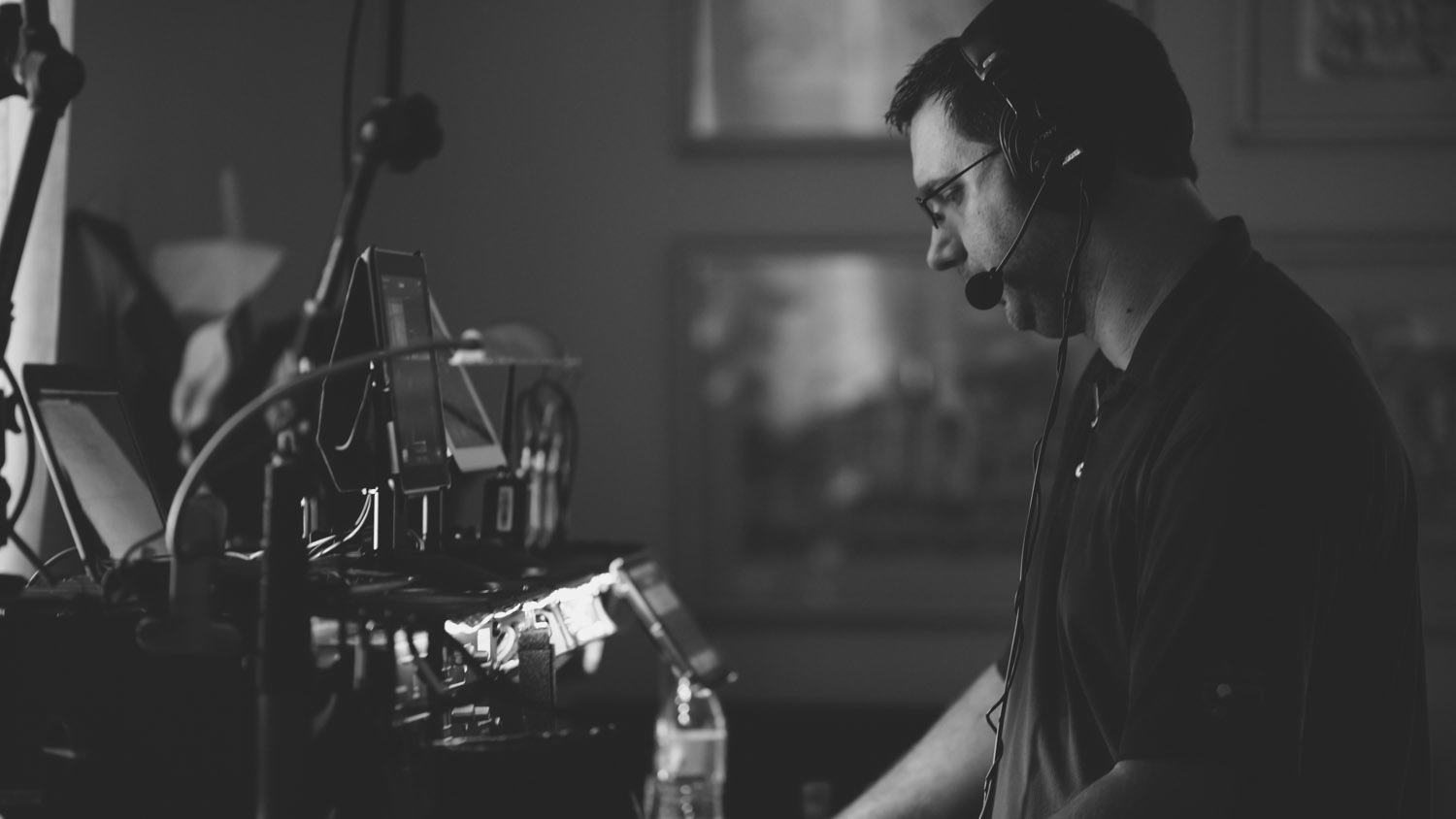 Nick is quick to give credit to the great recordings that were the basis for everything he was able to build on. He loved the materials delivered by location mixer/sound recordist, Stephen Preston (pictured left, on set). I asked Nick what makes a good field sound guy. Nick explains, “They know what mic to use in what situation. Hopefully you have a director who has a good relationship with the audio guy and they have a respect for each other. A lot of times a director will have a shot in his head that he really wants, but in all reality, there’s no way to mic that unless you put lavs on everybody, which is becoming more and more popular. Lavs can be OK, but lavs dampen the ambience and can give you clothing noise. Plus it’s so muffled down. They’re a necessary evil. We used a lot of them in War Room, I’ll be truthful with you, but Stephen Preston, again, used the right microphones and had the right placement on them and we were able to get some good stuff out of them. Some stuff was unusable. When they’re jumping rope, we can’t use the lavs obviously. The microphone’s all over the place. But the person in the field is so important – that he has an ear to listen and he has the correct filters and all that stuff that an inexperienced person is not going to know.”
Nick is quick to give credit to the great recordings that were the basis for everything he was able to build on. He loved the materials delivered by location mixer/sound recordist, Stephen Preston (pictured left, on set). I asked Nick what makes a good field sound guy. Nick explains, “They know what mic to use in what situation. Hopefully you have a director who has a good relationship with the audio guy and they have a respect for each other. A lot of times a director will have a shot in his head that he really wants, but in all reality, there’s no way to mic that unless you put lavs on everybody, which is becoming more and more popular. Lavs can be OK, but lavs dampen the ambience and can give you clothing noise. Plus it’s so muffled down. They’re a necessary evil. We used a lot of them in War Room, I’ll be truthful with you, but Stephen Preston, again, used the right microphones and had the right placement on them and we were able to get some good stuff out of them. Some stuff was unusable. When they’re jumping rope, we can’t use the lavs obviously. The microphone’s all over the place. But the person in the field is so important – that he has an ear to listen and he has the correct filters and all that stuff that an inexperienced person is not going to know.”
As I mentioned, Alex and I were quite careful to craft vocal performances from specific mics and specific takes. Alex is definitely one of those guys where he wants every scene checkerboarded with what we think are the best takes and specific inflections with mics specifically selected and softened with fades at the top and tail of every segment.
 But Nick went a step further. That’s the beauty of the film production process. Each person builds on the previous work and adds to it, making the whole greater than the sum of its parts. “Occasionally, the track that you gave us for a dialog scene had a hit or a bump or a noise, and we were able to go in at that point and pull the original audio, pulling up every mic on every recorded track in the field, and find that same scene, go through all of the takes on all of the mics and steal a word. We did that a hundred times throughout War Room. For example, in the scene where they’re sitting on the steps, and the dad kisses his daughter on the forehead, the steps just creaked like crazy through all the words. When it got up to a theatrical level, it was so in your face. So we were able to go back through the outtakes and pull pieces and parts from outtakes and patch them together so you couldn’t really tell: Same microphone, same scene, same time, same day as long as you’ve got those outtakes. I never complain about getting three or four takes on something. Sometimes it’s nice to have a couple of extra takes just to have some sound backup.”
But Nick went a step further. That’s the beauty of the film production process. Each person builds on the previous work and adds to it, making the whole greater than the sum of its parts. “Occasionally, the track that you gave us for a dialog scene had a hit or a bump or a noise, and we were able to go in at that point and pull the original audio, pulling up every mic on every recorded track in the field, and find that same scene, go through all of the takes on all of the mics and steal a word. We did that a hundred times throughout War Room. For example, in the scene where they’re sitting on the steps, and the dad kisses his daughter on the forehead, the steps just creaked like crazy through all the words. When it got up to a theatrical level, it was so in your face. So we were able to go back through the outtakes and pull pieces and parts from outtakes and patch them together so you couldn’t really tell: Same microphone, same scene, same time, same day as long as you’ve got those outtakes. I never complain about getting three or four takes on something. Sometimes it’s nice to have a couple of extra takes just to have some sound backup.”
“We always started with the takes and track that you guys (Alex and I) had chosen,” explains Nick. “Those were our top two tracks in our project, checkerboarded. But sometimes, because of another issue, we’d need to switch from what you chose – maybe a boom – to a lav to stay consistent throughout the whole scene. We also used your sound effects maybe 90% of the time. But on many scenes we put every footstep in, every slap of the jump rope in, every thud completely again but started with 90% of what you gave us. But it was the vision that Alex had when he was cutting the film. We tried to stay as true to that as we could.”
As I interviewed Nick, there was a bit of confusion because what I remembered delivering to Nick were carefully selected SINGLE tracks of dialogue, but what he remembered were that EVERY single recorded track for each take were in his Pro Tools session. After discussing this discrepancy with his team, he discovered that they had spent about four days going back to the original sound files and hand-matching (with the help of well-documented file names, metadata and matching timecode) the COMPLETE track set underneath the specific tracks Alex and I had delivered. Having those additional microphones available in his ProTools timeline allowed Nick to quickly find the best mics for a given scene.
 I asked Nick about some of the big scenes that must have been really fun to sound design – and their challenges. One of those scenes was the opening of the film which is comprised of a montage of dramatic Vietnam war footage.
I asked Nick about some of the big scenes that must have been really fun to sound design – and their challenges. One of those scenes was the opening of the film which is comprised of a montage of dramatic Vietnam war footage.
Nick laughs. “They made me dial that (the opening war scene) back a little bit, but I loved it. I had it like ‘Saving Private Ryan’ but Alex had me back it off. It’s really a great scene. As a sound designer, when you get a chance to do something like that you just go crazy. We got the sound from libraries and our own personal stuff.”
With Nick’s wealth of experience and expertise, I asked for some tips on making dialogue sound its best. “The best thing that you need to do to make dialogue sound good over music is to talk to your composer. Because he’s pretty much laying that in around what he’s hearing. To lay the dialog track in 5.1 correctly, when they mix their stems that they give me, we try to make sure that the center channel – where we mostly put dialogue, is not filled up with other stuff. Again, when we mix, the dynamics are part of it, the reverbs are one of the biggest tricks. They create the spaces in the audio that make the thing sound real. The whole surround thing – the spaces that are made with surround – that’s another super important step in the thing that make it sound like it’s a feature.”
“Dialog is basically mono, Nick explains, “It’s down the center. It’s designed to be down the center. In 5.1 they put a channel for dialogue to be in basically. So that’s the main driver of the movie. People, when they have a home movie system, that center channel is so important. That’s the meat of it, and everything else is built around that. All our life, we’ve been raised on stereo, where we sit between two speakers and it’s left and right. If I weren’t on the phone with you and I was standing in the room with you, we’d be in 5.1. So anything that was going on around us and what was going on in the side of the room I was on, we’d be hearing each other primarily from the sound coming from each other’s mouths, but also we’d hear the other sounds coming from around us including the sound of our voices coming off of surfaces in the room.”
For good dialogue sound, “If we can use the boom, we get a lot of the room sound automatically,” Nick continues. If we have to use the lav, because it’s tucked up in the clothing, a lot of that goes away and it’s a very dry sound. So that’s where we come back in with our room reverbs and EQ to give it back that little bit of slap that makes it feel like you’re in the room. And what gives that sense of realism is that all of our reverbs are in 5.1 surround. So even though the audio we’re sourcing it from – the lav for example – is a mono source, the reverb around that mono source is in 5.1. We pull them off a bit and spread them around. The room tone and the dialog are down the center. But the reverb is surround. It all depends on the scene.”
 I asked Nick about one of the “noisiest” scenes in the movie, which is during a double-dutch jump rope competition. “The jump rope scene was quite a challenge,” Nick agrees. “In retrospect, if I had known about that scene prior to coming on to do the post, that that scene was going to be shot I would have gone in and set up microphones around it to really catch the intensity of it. I would have asked the sound recordist to set up three stereo mics surrounding the action. But what Alex had put together with the tracks that he had built, gave it back some of that intensity, so then we added reverbs and every footstep in the M&E and totally recreated the excitement of what the real deal had. We took the mics there that you guys gave us and we manipulated it enough with reverbs and stuff to really give it some really good sound. That was a bunch of mono mics originally. We Foleyed every bit of it. Everything in the movie is Foleyed. There’s a cloth pass. All that is put back in as an extra layer pass. That’s the difference audio-wise between an A movie and a B movie. It’s those little touches. If we’ve done our jobs right, nobody knows we’ve done anything.”
I asked Nick about one of the “noisiest” scenes in the movie, which is during a double-dutch jump rope competition. “The jump rope scene was quite a challenge,” Nick agrees. “In retrospect, if I had known about that scene prior to coming on to do the post, that that scene was going to be shot I would have gone in and set up microphones around it to really catch the intensity of it. I would have asked the sound recordist to set up three stereo mics surrounding the action. But what Alex had put together with the tracks that he had built, gave it back some of that intensity, so then we added reverbs and every footstep in the M&E and totally recreated the excitement of what the real deal had. We took the mics there that you guys gave us and we manipulated it enough with reverbs and stuff to really give it some really good sound. That was a bunch of mono mics originally. We Foleyed every bit of it. Everything in the movie is Foleyed. There’s a cloth pass. All that is put back in as an extra layer pass. That’s the difference audio-wise between an A movie and a B movie. It’s those little touches. If we’ve done our jobs right, nobody knows we’ve done anything.”
Having worked on four previous movies with director Alex Kendrick, Nick is very much on track with how Alex works. “Alex is so hands on,” Nick explains. “He knows what he wants. And 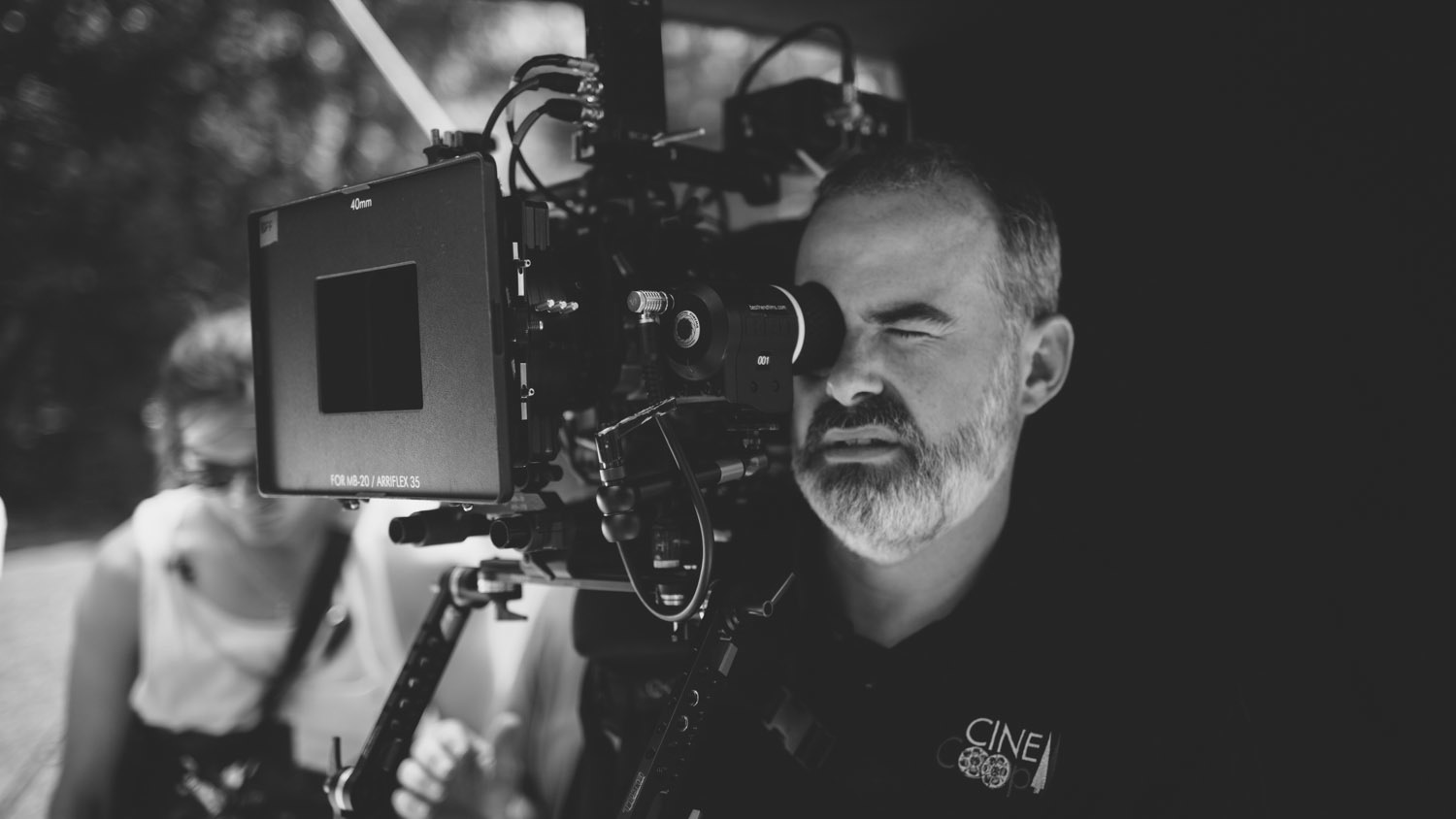 what’s amazing about Alex is that what he wants is correct. So many times, you just want to say to the director, ‘Let me do what I do. This is what I do. Let me save your butt.’ But Alex knows what he wants and he knows what the public wants. He’s brilliant at that. He’s awesome to work with. We’ve done four films together now and our heads are definitely in the same place. Sometimes I’ll go a little Hollywood on him and he’ll want to back me off, but it’s his vision and it’s his film. All I can do is give him what he wants the best I can.”
what’s amazing about Alex is that what he wants is correct. So many times, you just want to say to the director, ‘Let me do what I do. This is what I do. Let me save your butt.’ But Alex knows what he wants and he knows what the public wants. He’s brilliant at that. He’s awesome to work with. We’ve done four films together now and our heads are definitely in the same place. Sometimes I’ll go a little Hollywood on him and he’ll want to back me off, but it’s his vision and it’s his film. All I can do is give him what he wants the best I can.”
“When we leave my facility it is basically mixed,” Nick explains. “We call it a temp mix, but it is super close. Then we go to a larger room that is set up for theatrical release. My room is set up for Dolby too, but we go to a bigger space and a bigger room. There we open up my Pro Tools project and create what is essentially a mastering pass.”
Michael Kreple was the re-recording mixer on War Room and he worked at Juniper Post in Burbank, California. Michael explains that the larger room is critical to the mix experience: “Juniper Post has a big mix stage. The reason that makes a difference is purely based on translation. If a movie is going to play in big theaters across the country, you need to mix in a big room so the translation is correct. Having a big room is a big value.”
Michael – who has worked for more than twenty years mixing film, TV and music – explained his role as re-recording mixer. “I do the final mix of audio. I take ‘the big five:’ dialogue, music, hard effects, Foley, and background ambiences and turn it into a final mix.”

Sound editor/mixer Nick Palladino, re-recording mixer Michael Kreple, and direcor Alex Kendrick at Juniper Post in Burbank, CA.
Michael explains his collaboration with Nick Palladino, “It’s definitely a team effort. It’s not a one-man show. The guys at Juniper Post are great.”
Michael needs to worry about the industry specs and loudness levels that need to be delivered properly but he also needs to understand how to create a great theatrical sound experience.
Nick Palladino arrived in Burbank with the audio for the whole movie on a simple little 500GB drive with the Pro Tools session and Michael copied it over to his system. Michael continues, “Then we pre-dubbed what he had done for three days. Then five days on the mix stage in 5.1 surround. Pre-dubbing is an old-school term that takes the separate elements and makes sure that those elements – on a big-picture level are generally correct and that if anything is missing, like a cut of music or a sound effect missing we make note of that. We also discussed how, in the opening scene, where we wanted the missiles to come from in the surround space.”
I wanted to continue the discussion I’d had with Nick about the importance of those dialogue tracks. Michael expounds on the thought, “It comes down to how you utilize your tools which are plug-ins. We have a top, top level dialogue chain, and what that means is that it goes through a certain amount of EQ and compression and de-essing, and utilizing that dialogue chain warms it up and makes it pleasing.”
 Michael doesn’t just consider his role as being a mixer: “I’m a film maker. I’m not just a button pusher or set the volume. It’s a way of creating the experience of watching the film. At the same time you are working with the director and with Nick and talking about whether at this moment we should push this sound at this moment because it helps tell a story. We’re trying to tell a story. Knowing when to use sound and when not to use it. There are moments in the film when the mom breaks down and starts to prepare her own war room and we didn’t use any sound other than the sound track. At the end on the jump rope completion we had a ton of sound effects of the feet and everything and we backed some of that off and knowing how we cut EQ or boosted EQ we got it to play in a certain way. Tweaking sound with EQ and compression to get it to hit a certain way through the speakers. My background is music. Knowing how to carve out frequencies to make room for other things.
Michael doesn’t just consider his role as being a mixer: “I’m a film maker. I’m not just a button pusher or set the volume. It’s a way of creating the experience of watching the film. At the same time you are working with the director and with Nick and talking about whether at this moment we should push this sound at this moment because it helps tell a story. We’re trying to tell a story. Knowing when to use sound and when not to use it. There are moments in the film when the mom breaks down and starts to prepare her own war room and we didn’t use any sound other than the sound track. At the end on the jump rope completion we had a ton of sound effects of the feet and everything and we backed some of that off and knowing how we cut EQ or boosted EQ we got it to play in a certain way. Tweaking sound with EQ and compression to get it to hit a certain way through the speakers. My background is music. Knowing how to carve out frequencies to make room for other things.
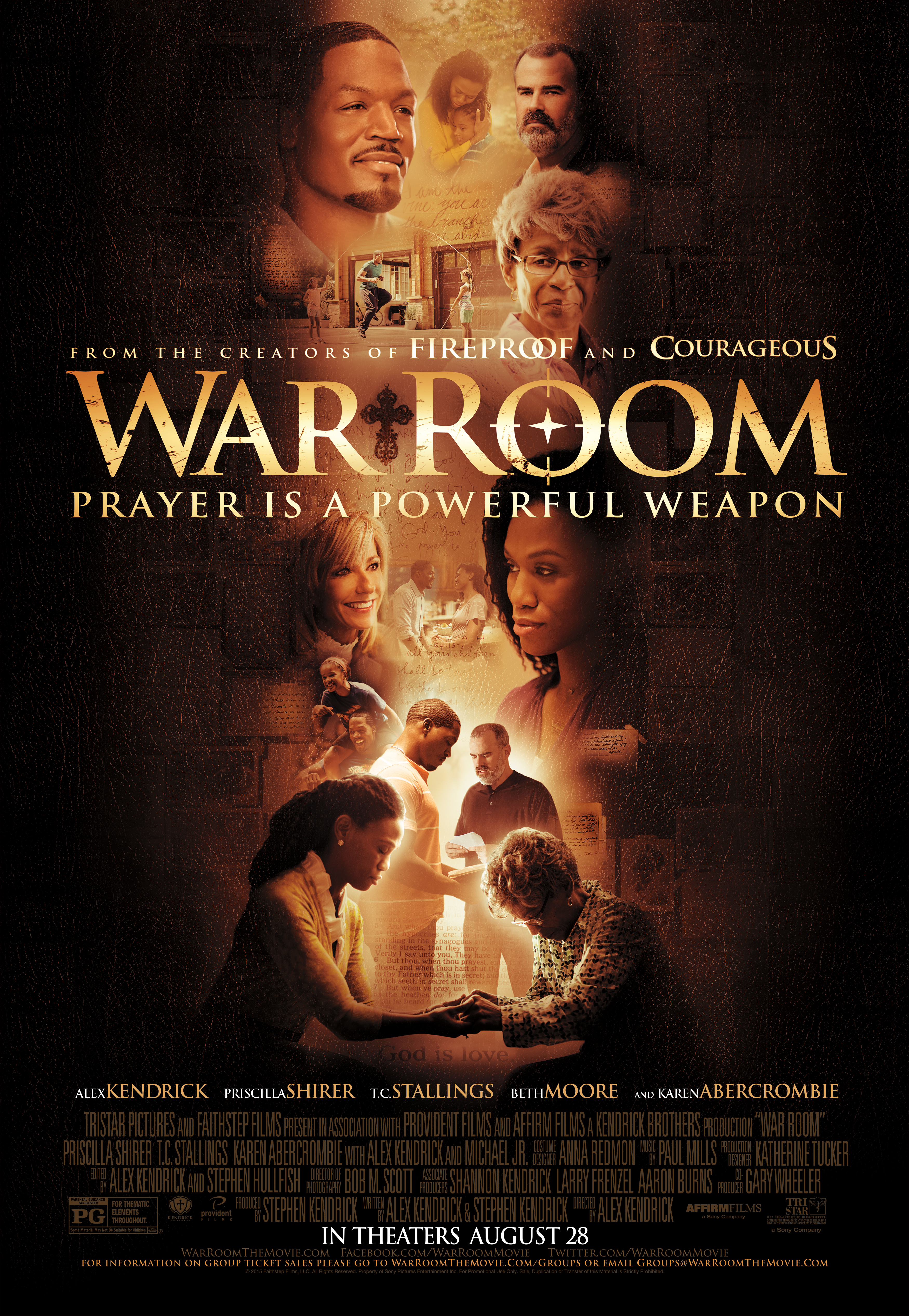
The bass guitar and the bass drum, are in the same space, but you can do things with EQ to make room for each other. That experience also helps me get the dialogue to cut through a piece of music that also has vocals in it. How do you get one stick out when they’re competing.”
With the mix done and sounding perfect, Michael’s final job was delivering that mix to Roush Media for inclusion in the DCP.
As explained in the previous article, those audio files were included by Roush Media in the DCP and delivered for duplication and delivery to the theaters.sion in the DCP. Surprisingly, the deliverables for that are quite simple. “We delivered 24bit, 48k WAV files. 5.1 sound is delivered as six discreet mono files. Then the LT/RT (stereo) deliverable files are encoded as interleaved stereo, and everything is delivered on a hard drive.”
I hope you’ve enjoyed this series, which I tried to make as comprehensive and inclusive as possible. And I hope you get a chance to check out War Room in theaters. And don’t forget to check out the previous two articles in the series.
Follow me on Twitter (@stevehullfish) for more details on my next feature film project, which is being edited in Premiere.

Filmtools
Filmmakers go-to destination for pre-production, production & post production equipment!
Shop Now